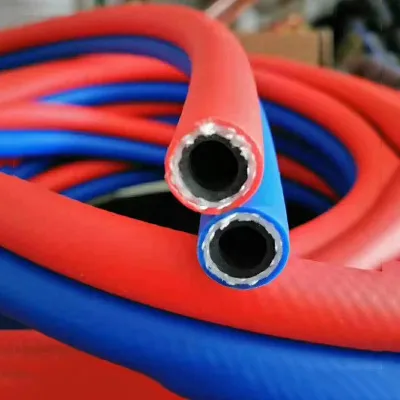Layflat Hoses - Durable, Lightweight, and Versatile Solutions
The Versatility of Layflat Hoses A Comprehensive Overview
Layflat hoses have become an essential tool in various industries around the globe due to their unique design and functional benefits. These hoses are constructed from durable materials that allow them to be flattened and easily transported, making them a preferred choice for many applications ranging from agriculture to construction and beyond.
What Are Layflat Hoses?
Layflat hoses are flexible hoses that can be laid flat when not in use, which significantly reduces the space required for storage and transportation. They are typically made from woven polyester with a polyurethane or PVC coating, which provides strength and resistance to abrasion, UV rays, and various chemicals. This combination of materials ensures that layflat hoses can withstand high pressures while remaining lightweight and easy to handle.
Applications in Agriculture
In the agricultural sector, layflat hoses are widely used for irrigation purposes. Their ability to carry large volumes of water over long distances makes them ideal for farmers looking to optimize their irrigation systems. Layflat hoses make it easy to distribute water evenly across fields, ensuring that crops receive the necessary moisture to thrive. Furthermore, they can be connected to various pumping systems, allowing for flexibility in their application.
Construction and Mining
The construction and mining industries also benefit significantly from the use of layflat hoses. In these settings, they are commonly employed for dewatering applications. When heavy rainfall or groundwater accumulation occurs, layflat hoses can efficiently transport water away from work sites, preventing delays and ensuring that operations can continue smoothly. Their flexibility allows them to navigate around obstacles, making them a practical solution in rugged terrains.
layflat hoses

Advantages Over Traditional Hoses
One of the primary advantages of layflat hoses over traditional rubber hoses is their ease of storage. Traditional hoses can be bulky and cumbersome, requiring significant space. In contrast, layflat hoses can be rolled up compactly, taking up far less room in storage sheds or vehicles. This portability is particularly advantageous for professionals who move from site to site.
In addition, layflat hoses typically have a higher burst pressure rating compared to standard hoses, providing enhanced safety and reliability during use. The materials used in their construction are designed to resist wear and prolong the life of the hose, making them a cost-effective option over time.
Environmental Considerations
As industries increasingly focus on sustainability, layflat hoses are also making strides in this area. Many manufacturers are producing eco-friendly options that utilize recyclable materials, reducing the environmental impact of hose disposal. This aligns with the growing demand for responsible and sustainable practices in various sectors.
Conclusion
In conclusion, layflat hoses are a versatile and indispensable tool in a variety of industries. From agriculture to construction, their unique design offers practicality and efficiency. As more professionals recognize the benefits of these hoses, their popularity continues to rise. With advancements in materials and environmentally-friendly options, layflat hoses are paving the way for a more sustainable future while meeting the demands of modern industries. Whether it's for irrigation, dewatering, or any other application, layflat hoses are proving to be a reliable solution for countless challenges.
-
Unrivaled Performance and Applications of PU Pneumatic Hoses and TubesNewsJun.11,2025
-
The Transparent World of Industrial Tubing and Hosing SolutionsNewsJun.11,2025
-
The Intricate World of Pneumatic Conduits: Tubes and HosesNewsJun.11,2025
-
The Dynamic Landscape of Pneumatic Conduits: Unraveling Key ComponentsNewsJun.11,2025
-
The Diverse Applications and Significance of Transparent PVC TubingNewsJun.11,2025
-
High - Pressure Pneumatic Tubing and Systems: An In - Depth LookNewsJun.11,2025














